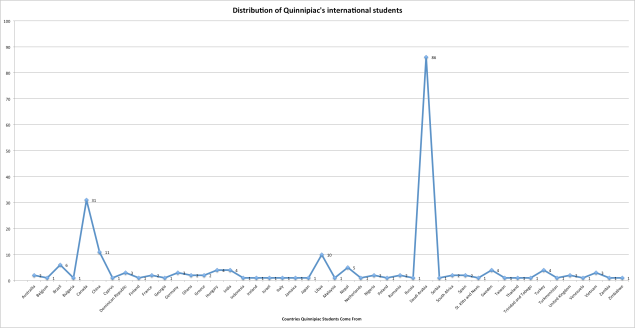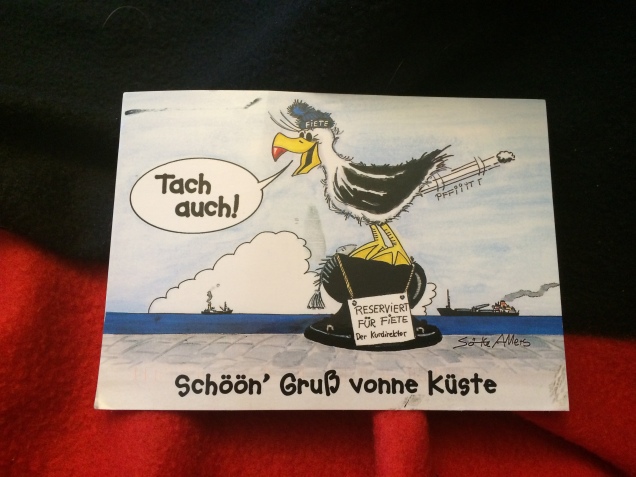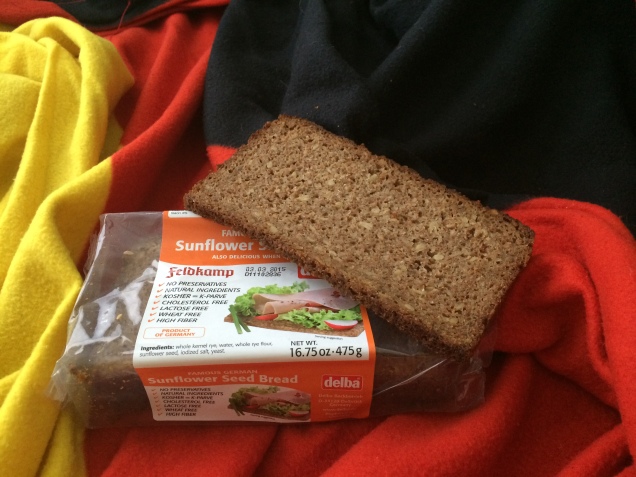June – a rare moment where Quinnipiac University is quiet. Students, faculty, and staff enjoy a break after a long spring semester. But for Nicole Kurker-Stewart, the assistant director for international students and programs, it’s time to meet Quinnipiac’s next class of international students.
Sitting behind her desk in a small office on the second level of Quinnipiac’s Athletic Center, the 28-year-old described her job.
“A lot of it is doing the immigration paperwork for international students,” she said, sitting arrow-straight in her office chair. She continued, “so issuing the initial I-20s, maintaining the I-20s while they are here, and doing work authorization.”
An I-20 is one of the key documents for international students in the U.S. This three-pager is both the first step toward a student visa and – besides the actual visa – a must-have at the port of entrance.
“Aside from the immigration aspect,” she continued after a brief pause, “it’s also programing for the students, we do two to three events each semester for the students and in addition to that, we have what’s called international education week.”
This week takes place every fall. Campuses across the nation become the stage to celebrate the global aspects of studying in the U.S.
Kurker-Stewart continued and explained the part of her job that finally puts faces to the names.
There’s an international student orientation period each semester, “which runs for a week in the fall and a couple of days in the spring to get the students acclimated.”
Getting to know the students is “very fun, it’s very rewarding. Because a lot of times there have been multiple emails and I’ve seen their passport picture, but that’s (it). They don’t know who I am, so it’s nice to finally have them here.”
“Introducing them to the campus,” she added, “making sure they’re going to be set up OK. It’s fun; it’s one of the better parts of my job.”
Orientation comes with a special element Quinnipiac offers its incoming internationals.
“We do what’s called global partners,” Kurker-Stewart said. “Current students – they could be international, they could be domestic – and they volunteer to help incoming students transition into Quinnipiac.”
Kurker-Stewart works in a team that is dedicated to international education. The Office of Multicultural and Global Education (OMGE) takes all international students under its wings. But it’s also the place to go for American students who want to study abroad.
Andrea Hogen is the director for global education. As Kurker-Stewart’s boss, the 40-year-old oversees the academic international activity on campus.
While Hogan directs Quinnipiac’s efforts to grow and maintain a global student body, Kurker-Stewart acts.
“As far as maintaining our relationship with the Department of Homeland Security (is concerned),” Hogan explained, “I’m in charge of that, but Nicole is doing the day-to-day operations – immigration advising, cultural adjustments for students, and resolving issues of helping the students to live here.”
Documents and folders seized Hogan’s desk. Describing Kurker-Stewart as “organized, diligent, and dedicated to her work and the students”, she admired how her employee could handle multiple tasks at once.
Talking about organizing life at the OMGE, Hogan remembered the events of one night shortly before the start of a semester. The airport pick-up of an incoming student didn’t follow standard procedures.
“I’ll never forget,” she said. “I got a call, maybe at midnight, from our bus company, saying, ‘We don’t have the student, where is the student?’ “
She paused, and then continued interrupted by laughter, “I didn’t have their reservation. So I texted Nicole – at midnight – and she texted back, saying, ‘I have it, I can forward it to you.’ ”
“She forwarded it to me,” Hogan said, “and we could resolve the situation, and got the student to campus.”
Kurker-Stewart outlined the reasons why the OMGE has decided to offer their global partners program.
“It’s not new that we’ve had international students, but it’s new that we’ve had these growing numbers. There are certain needs that the international student population has that become more visible.”

Since Hogan and Kurker-Stewart are on their own when it comes to working directly with international students, orientation-week has evolved into a hectic time.
“We would end up taking students to get bedding and that kinda thing,” Kurker-Stewart said, “and we figured (we would need support).”
And the Quinnipiac community was the pool the OMGE went fishing. On Wednesday, April 30, 2014, training took place to better prepare global partners for their jobs.
Standing comfortably in front of the small group of next semester’s global partners, Kurker-Stewart pointed to cultural differences they might encounter when interacting with people from other backgrounds.
What global partners should be aware of is “about social competency,” she said in her calming voice. “And these (examples) all come from stories that actually happened here.”
She turned slightly and pointed toward the projection of a presentation, then continued. “Physical contact, for example. We had a student from Brazil, who said that everybody was extremely cold and mean here. They don’t smile. They don’t hug. But then again, you have somebody coming from Asia, for example, and it’s different, it’s just a different concept.”
Pointing the Quinnipiac community in the right direction when it comes to dealing with people from foreign cultures is one of the tasks on Nicole Kurker-Stewart’s agenda. But the global partners program needs some maintenance behind the scenes as well.
Besides developing an application form, raising awareness on campus for the program, and collecting incoming applications, there is also the process of reviewing the candidates, and notifying the new global partners.
Beyond getting global partners up to speed with their new role in the student community, Kurker-Stewart needs to keep an eye on everything. “I’m checking in with people throughout the semester, and then at the end, which is really important, I’m getting the evaluations, the feedback from students who were global partners.”
The OMGE wants to know what worked and what didn’t. And they are open to incorporate suggestions for the next year.
With a surprised smile, she stopped explaining her involvement with global partners and said, “I left out matching people, that happens as soon as we know the numbers, which is usually by June.”
The group should be balanced. While the duos should have a common thread to make the connection easier, it remains a goal to create a diverse group.
“We’ve got global partners who’ve studied in Spain for this semester,” Kurker-Stewart said, “so we’re gonna try to match them with incoming people from South America.”
One student will spend the summer in China, “so we’re gonna try to match her with a Chinese student. They have things in common. That’s what we are trying to do.”
But success is not always guaranteed. “Sometimes it works out,” she said, “sometimes it doesn’t.”
Creating a place for the community to foster cultural competency is the driving force behind another initiative powered by the OMGE – the Hola Café.
Aileen Dever, associate professor of modern languages, explained. “Hola stands for Hispanic and International Organization of Leaders in Action, and what we wanna do is to spark interest here in the United States, in this particular university.”
The casual gatherings in the campus cafeteria are supposed to get people “talking about intellectual topics,” Dever said. “And really going beyond the surface, finding out about other cultures.”
“We want to have themes,” she added. “For example, we talked about what does the topic of love mean in different cultures. How was it represented, in terms of colors, in terms of literature, in terms of how people regard each other. So we had the Chinese perspective, we had someone from Norway; we had lots of different perspectives.”
Dever has known Nicole from her time as an undergrad. Having her as a student in Spanish 301 and 302, the professor said, “she had a deep interest in languages, which ties in to the work she is doing here.”
“She is a liaison between the international students and the university community,” Dever added. “She helps students understand what a U.S. institution is like, and the opportunities that are available to them. She is a resource for them in terms of information. And I think also someone whom they can trust, and feel very comfortable with.”
Dever sat comfortably in a tan leather armchair on the upper level of the cafeteria. With a quick glance out the window, she began to reminisce.
“Any dealing that I’ve ever had with Nicole is always been positive. Because she truly is looking at it, ‘OK, this is what we wanna do, how are we going about doing it’.”
“She is one of those can-do people,” the professor added. “Not, ‘OK, here are all the obstacles’, no, ‘OK, this is what we wanna accomplish, how can we do it’. That I find wonderful about Nicole.”
When the path an international student shares with Quinnipiac comes to its end, some arrive at a crossroads. Thousands of miles away from home, but with freshly developed roots in the new world, students need to find their bearings.
Optional Practical Training (OPT) is one resource students can use to guide them. Available to all international students, OPT provides the opportunity to add up to one year of work experience – without a need for a new visa – to the international student experience.
Incomplete paperwork is the only reason why OPT could be denied. While universities with a larger student body tend to leave the work to the students, “Quinnipiac tends to be more involved in the process,” Kurker-Stewart said.
“We do one-on-ones,” she explained. “We ask the student to be prepared with all these documents. We issue the I-20, and we put everything together, take a copy, and then the student mails it out.”
One of the students currently going through this process is a Malayan law student, who is approaching graduation and wants to add work experience in the U.S.[*]
With dozens of documents next to her on the table, she sat in Kurker-Stewart’s office for her one-on-one meeting on Monday, April 28.
One of the first topics during those OPT meetings is the start date for the OPT. But besides finalizing some details in the paperwork and collecting all documents, Kurker-Stewart guides students through the legal jungle.
Traveling is one of those areas where students need to know their responsibilities. Turning away from the computer screen in front of her, she faced the student and asked, “Well, do you have travel plans?”
“The safest bet is to say,” she continued immediately, “if you’re going to be traveling on OPT, it’s best to do so once you have a job, once you have the EAD card (Employment Authorization Document). The most diligent time to travel is between when you finish and when you get approved (for OPT). It doesn’t mean that you can’t. Some people do and have no problems. But you could.”
“And what do they do? the student chimed in. “They kick you out of the country after you’ve actually arrived?”
“When you come back in?” Nicole returned.
She nodded. “Yeah, what would they do if they rejected me?”
Kurker-Stewart explained that there’s room for errors if an immigration officer has not received training in OPT. “They would look (on page one of your) I-20,” she said, “which will still say May 20. They’re supposed to be looking at page three, which will say ‘on OPT’.”
The young Malayan looked concerned. “That would happen in the foreign country or in the U.S.?”
“That would be when you’re trying to enter,” Kurker-Stewart responded, “so when you’re going through customs in the U.S., in JFK or wherever.”
She added that “it’s only happened to two of our students in the four or five years I’ve been here. So, if you do travel while you’re on OPT, in addition to all the usual stuff – the I-20 and the visa – you would wanna take the OPT card and a job offer letter, and usually people don’t have a problem. It’s just something to keep in mind. Cause the system is not perfect.”
OPT marks the end of a student’s journey at Quinnipiac. The part that closes the circle for some international students elicits mixed emotions in Kurker-Stewart.
“Especially with the students I know better,” she said, “it’s a little sad, but it’s exciting. It’s just neat to see where they are going. If I know the student well, I usually say a few words.”
“A lot of them go on to get doctorates or become big shots in their countries. So it’s fun to say I know them,” she concluded with a smile.
—-







